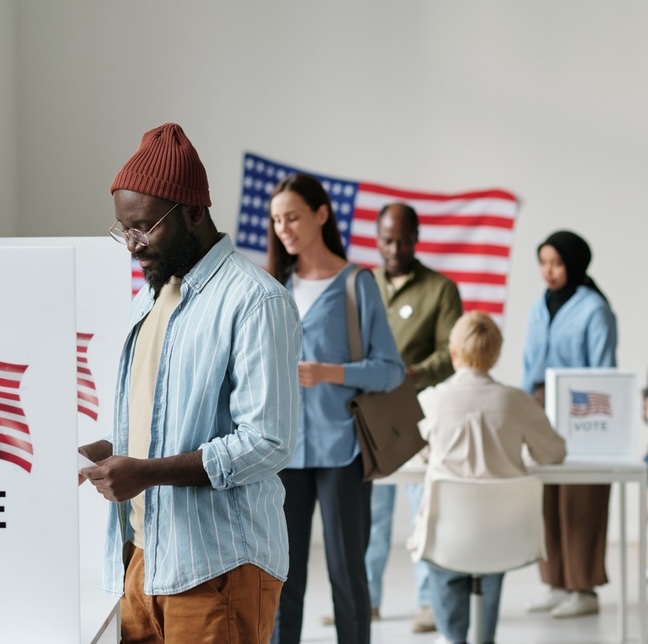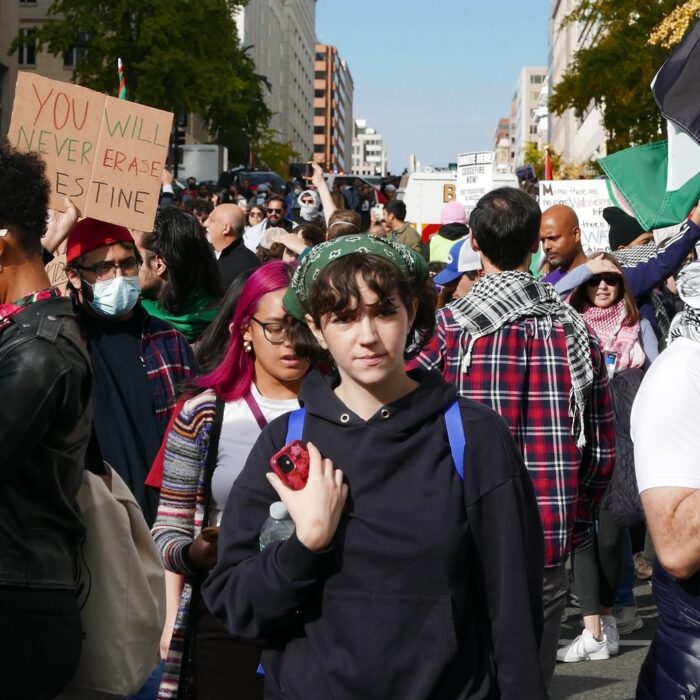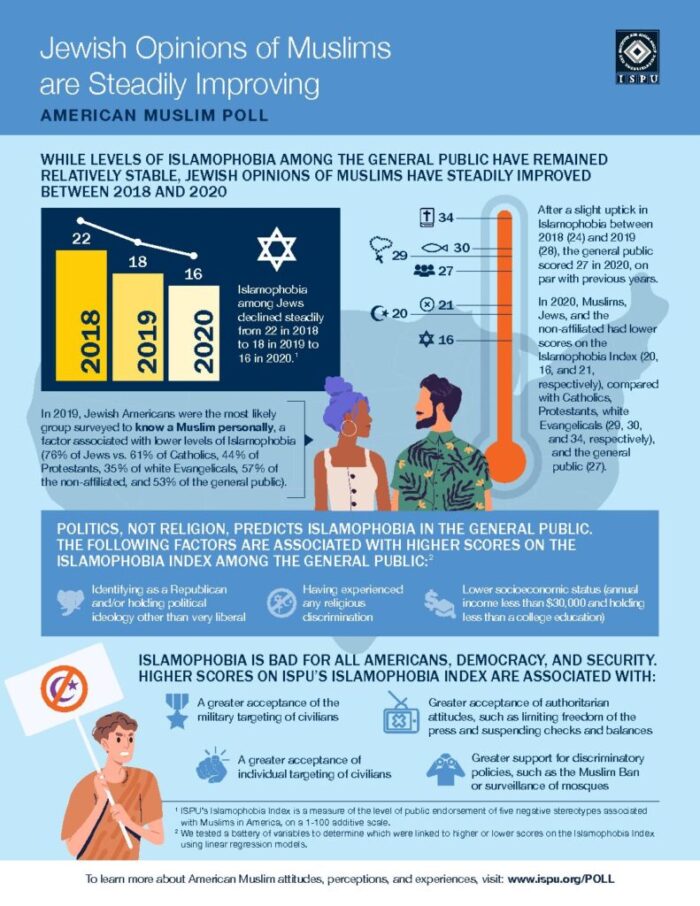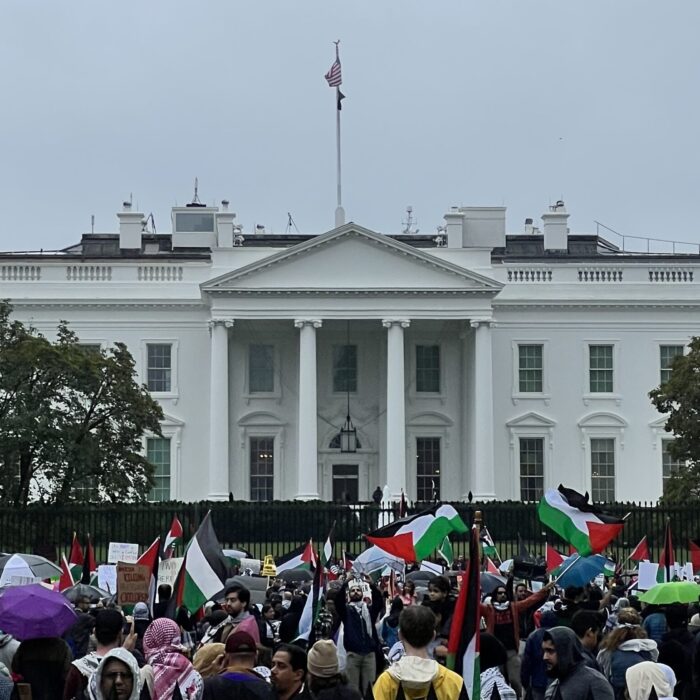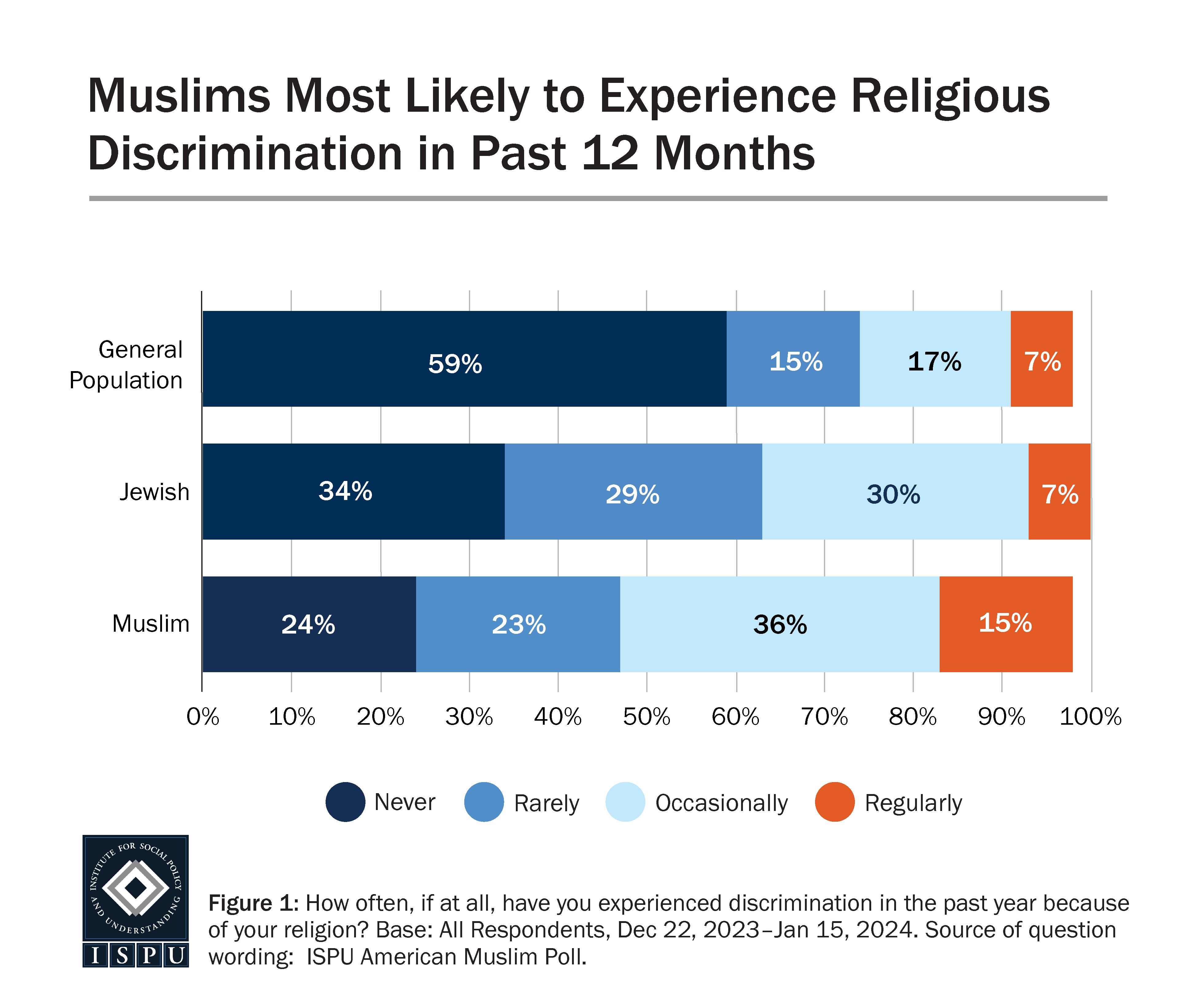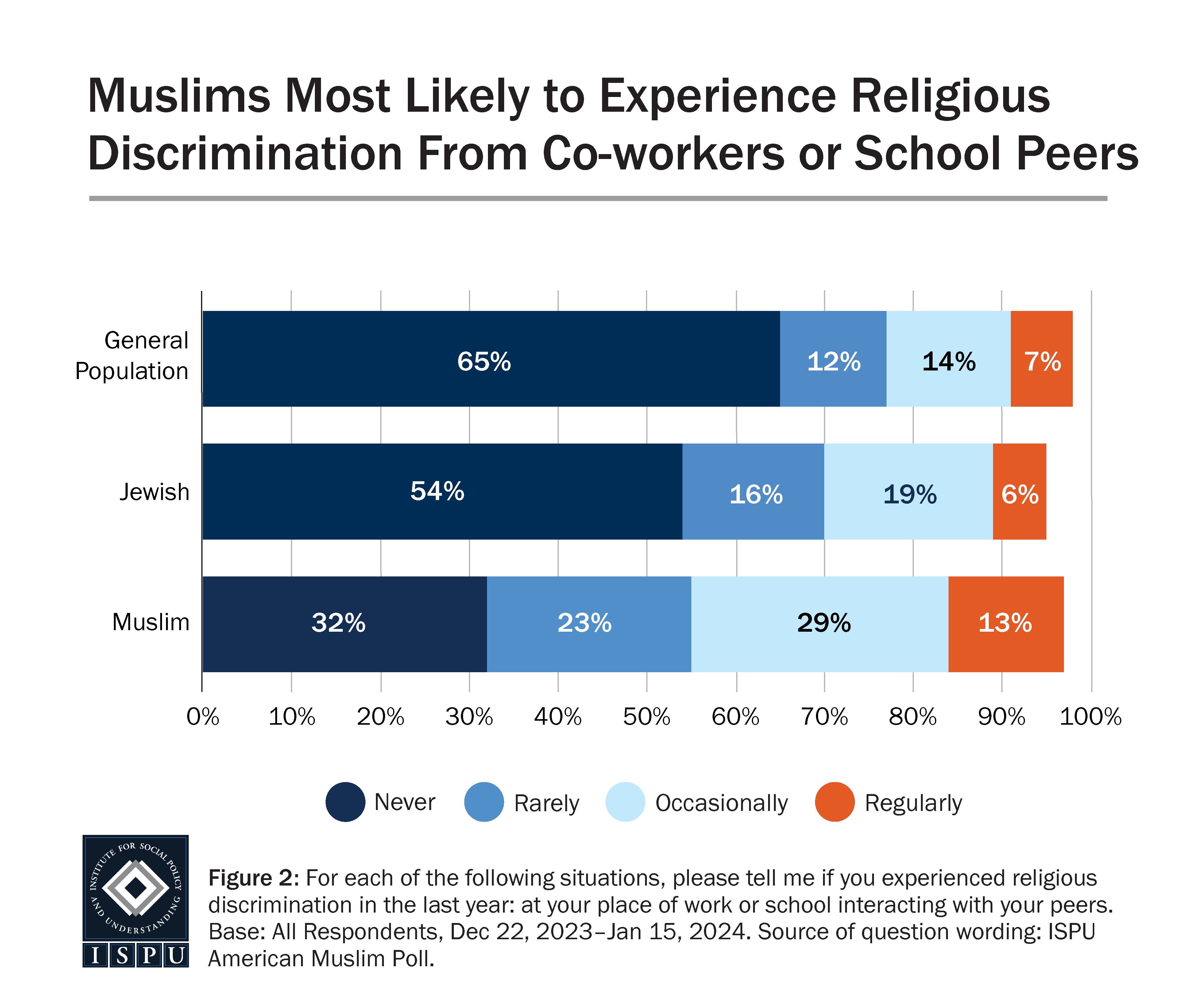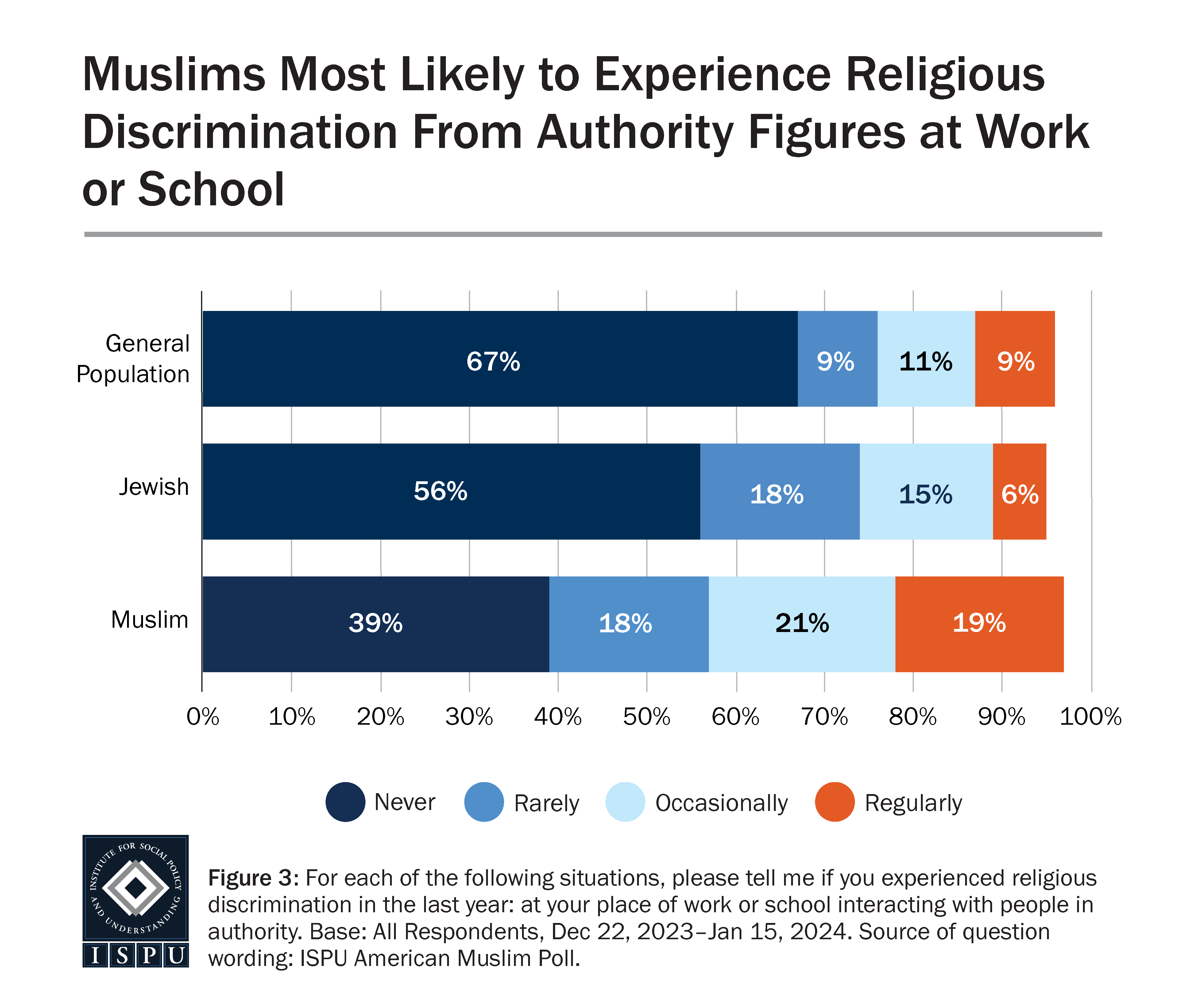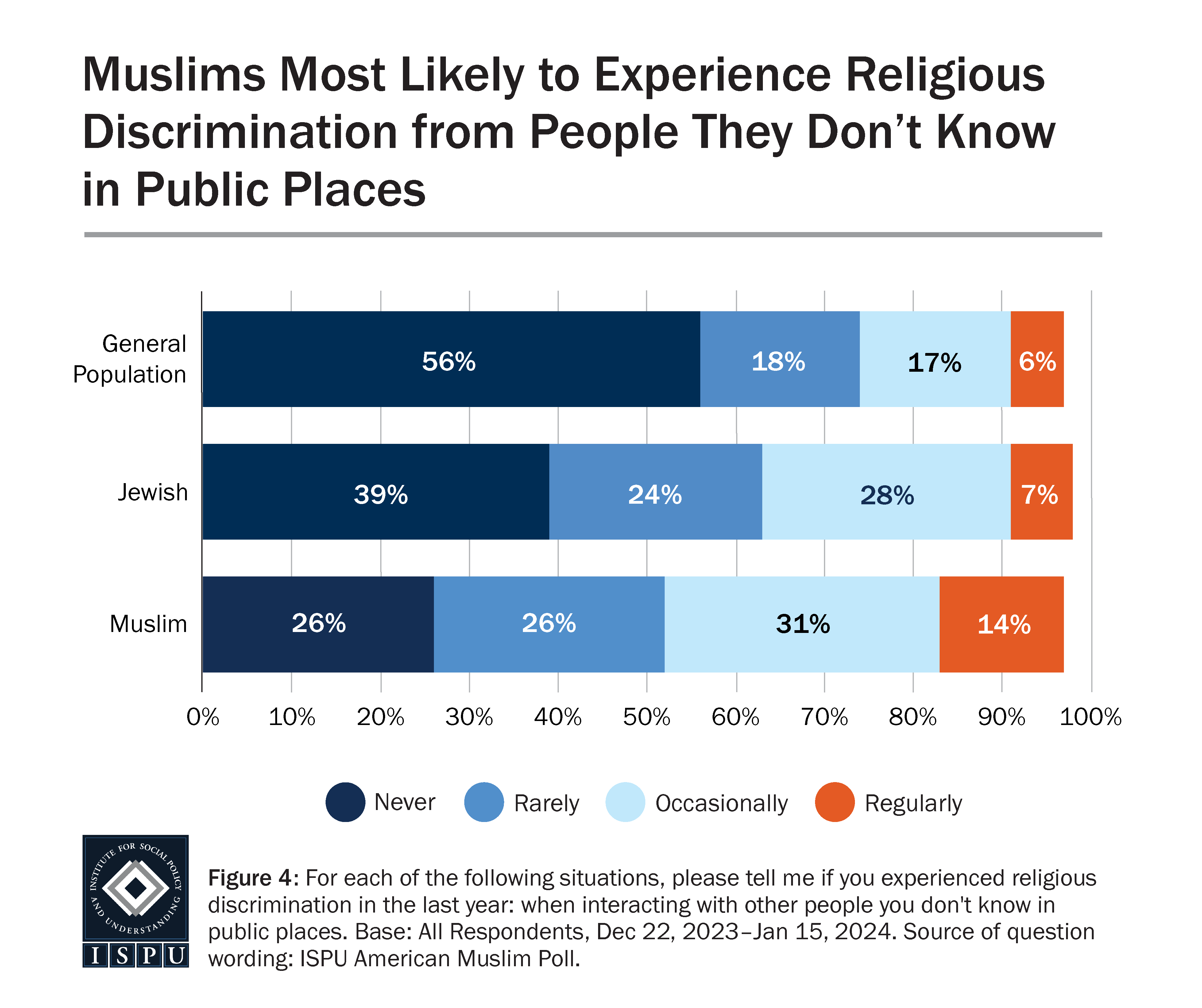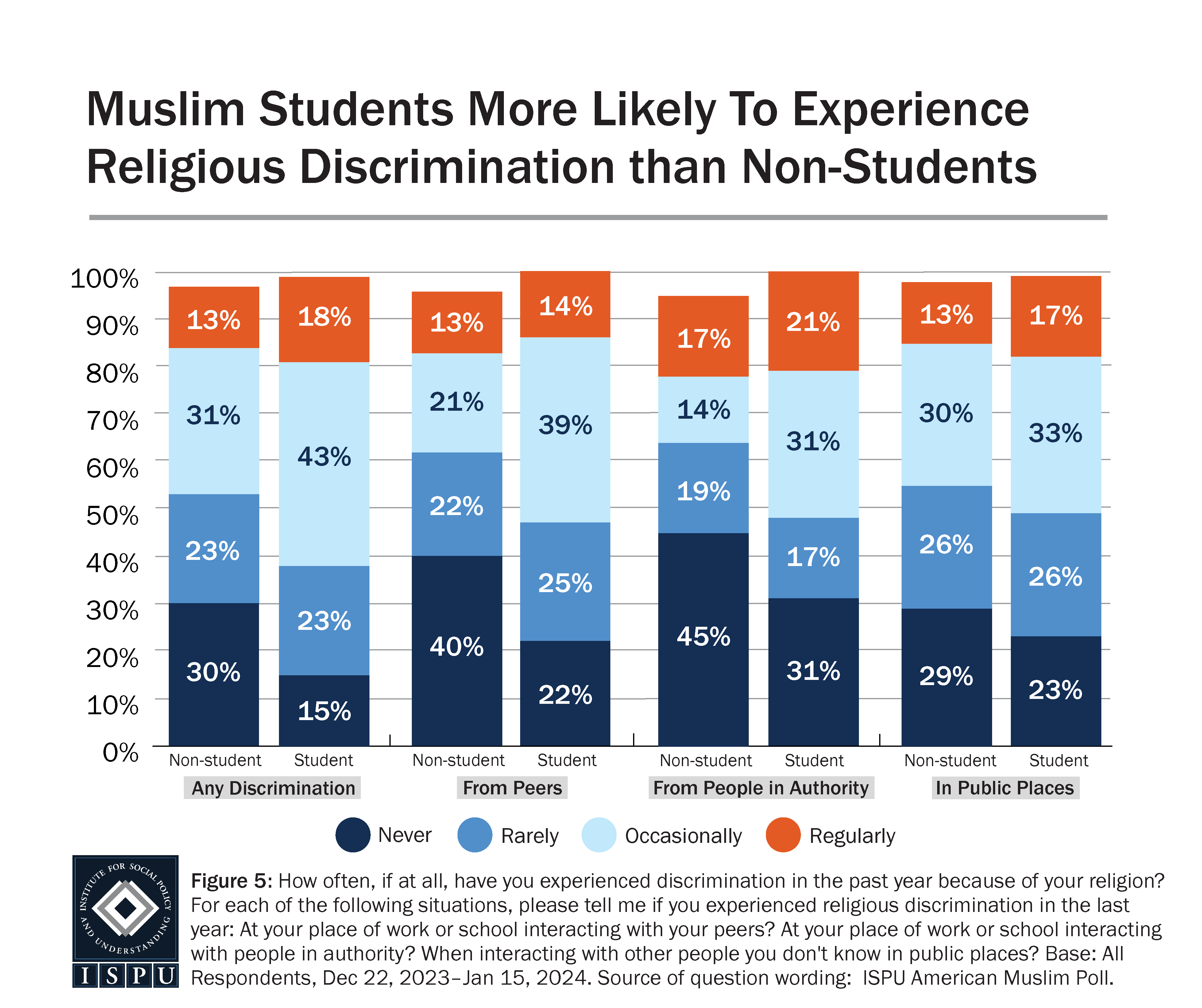
American Muslims, Especially Students, Most Likely to Experience Religious Discrimination
April 16, 2024 | BY ERUM IKRAMULLAH
The crisis in Gaza, which as of this writing has claimed the lives of around 1,200 Israelis and more than 32,000 Palestinians, has captured the attention of the world. Since October 7, several surveys have captured American public opinion on the situation. These studies examined the views of the old and young, Democrats and Republicans, men and women, college-educated and non-college-educated. The missing voice has been that of religious groups, particularly Muslim and Jewish Americans, who are often perceived as on opposing sides of this crisis.
This multi-part analysis of a survey aimed to assess the views of these two key American religious groups, as well as Catholic, Protestant, including white Evangelicals, and those not affiliated with a religious group, on a number of contentious topics. See part one here, and part two here.
This article, the third in a three-part series, is focused on the experience of religious discrimination in the past year, in general and in various settings, among Muslims, Jews and the American public in general. Our sample size did not allow us to examine the experiences of subgroups within religious communities like Arab Muslims for example.
Since October 7 and the ensuing crisis in Gaza, Muslim and Jewish Americans have reported a surge in bias incidents. For Muslims, some of these incidents have been life-altering or lethal. Even prior to October 7, in 2022 when we last polled on experiences with religious discrimination, Muslims were the most likely to say they faced discrimination because of their religion, followed by Jews.
Since bias incidents are defined and documented differently by distinct reporting organizations, it has been difficult for decision makers and the media to get an accurate picture of the relative extent of the problem in each community and therefore devote the proper attention and resources to address it. A national scientific survey provides this much-needed side-by-side comparison. The full methodology is available in Appendix I.
Here is what we discovered:
RELATED RESOURCES
- 09 February, 2024

American Muslims, Especially Students, Most Likely to Experience Religious Discrimination
April 16, 2024 | BY ERUM IKRAMULLAH
The crisis in Gaza, which as of this writing has claimed the lives of around 1,200 Israelis and more than 32,000 Palestinians, has captured the attention of the world. Since October 7, several surveys have captured American public opinion on the situation. These studies examined the views of the old and young, Democrats and Republicans, men and women, college-educated and non-college-educated. The missing voice has been that of religious groups, particularly Muslim and Jewish Americans, who are often perceived as on opposing sides of this crisis.
This multi-part analysis of a survey aimed to assess the views of these two key American religious groups, as well as Catholic, Protestant, including white Evangelicals, and those not affiliated with a religious group, on a number of contentious topics. See part one here, and part two here.
This article, the third in a three-part series, is focused on the experience of religious discrimination in the past year, in general and in various settings, among Muslims, Jews and the American public in general. Our sample size did not allow us to examine the experiences of subgroups within religious communities like Arab Muslims for example.
Since October 7 and the ensuing crisis in Gaza, Muslim and Jewish Americans have reported a surge in bias incidents. For Muslims, some of these incidents have been life-altering or lethal. Even prior to October 7, in 2022 when we last polled on experiences with religious discrimination, Muslims were the most likely to say they faced discrimination because of their religion, followed by Jews.
Since bias incidents are defined and documented differently by distinct reporting organizations, it has been difficult for decision makers and the media to get an accurate picture of the relative extent of the problem in each community and therefore devote the proper attention and resources to address it. A national scientific survey provides this much-needed side-by-side comparison. The full methodology is available in Appendix I.
Here is what we discovered:
RELATED RESOURCES
- 09 February, 2024
1. A majority of Muslims and Jews report facing religious discrimination in the past year
When asked how often, if at all, they experienced discrimination in the past year because of their religion, the majority of Muslims (74%) and Jews (66%) reported experiencing some frequency of bias. This compares to 39% of the general public. Where Muslims stand out as a religious minority is in how frequently members of the group report experiencing religious discrimination “regularly.” At 15%, this is twice as likely as Jewish Americans and the general public (both at 7%), a statistically significant difference.
2. Muslims are most likely to experience religious discrimination from peers
Muslims (65%) are significantly more likely than Jewish Americans (41%) and the general public (33%) to report experiencing discrimination at work or school when interacting with peers. Jewish Americans are more likely than the general public to report some frequency of discrimination from peers, but less frequently than Muslims. Muslims (13%) are also more likely than Jews (6%) and the general public (7%) to report this type of experience occurring regularly.
3. Muslims are most likely to experience religious discrimination from authority figures
More than half of Muslims (57%) report experiencing religious discrimination from authority figures at their place of work or school, compared to 39% of Jewish Americans and 29% of the general public. Like other contexts, Muslims are twice as likely to report this discrimination occurring regularly. This suggests an institutional bias towards Muslim employees and students, also seen across sectors prior to October 2023.
4. The majority of Muslims and Jews experience discrimination in public places from strangers
The majority of both Muslims (71%) and Jews (59%) report experiencing religious discrimination from people they do not know in public places. This is significantly more frequent than the general public, where only 41% report some frequency of religious bias in the same setting. This reflects the heightened fear both Muslims and Jews have reported feeling since October of last year. As with discrimination from peers and people in authority, Muslims (14%) are twice as likely as Jewish Americans (7%) and the general public (6%) to report experiencing it regularly.
5. Muslim students in higher education or a trade/vocational program are especially impacted by religious discrimination
Muslims are more likely than Jewish Americans or the general public to experience religious discrimination ‘regularly’, whether in public places from strangers or at work/school from both peers or people in power. That bias, however, is not felt equally among Muslims. An overwhelming majority of Muslim students in higher education or in a trade/vocational program (84%) say they experienced religious discrimination, in general, in the last year compared to 66% of non-students. Muslim students (78%) are more likely than non-students (56%) to report experiencing religious bias from peers at school or work, in particular. Muslims students (68%) were also more likely than Muslims who are not students (50%) to report facing discrimination for their religion by people in authority at school or work.
Anti-Muslim bias in institutional settings is a serious issue overall in the United States today. However, it is especially felt by students, underscoring the urgent need for university administrators to address Islamophobia on campus, including incidents by those in positions of authority.
Conclusion
The crisis in Gaza has had a devastating humanitarian toll on the people of the strip. It also has had reverberations closer to home, with growing tensions on college campuses, workplaces, and in the public square. This research equips decision makers with much-needed data showing the growing need to address anti-Muslim and antisemitic climates in those arenas.
DOWNLOAD THE ANALYSIS PDF

Erum Ikramullah is the Senior Research Project Manager at ISPU, where she manages the day-to-day activities of the organization’s research studies. Learn more about Erum→




